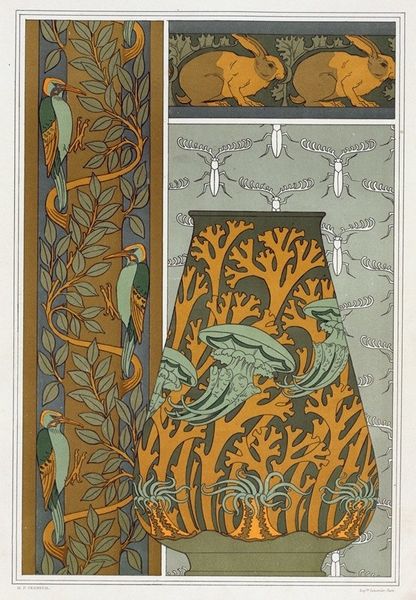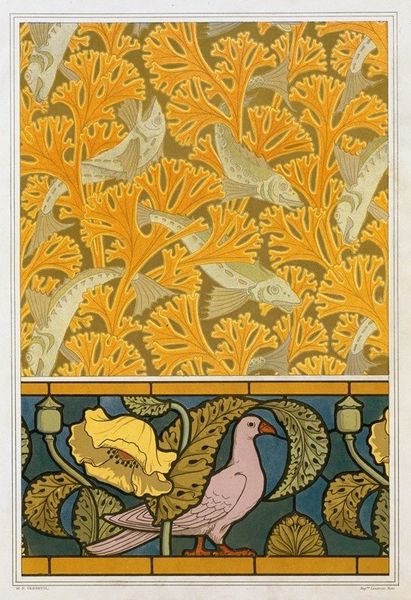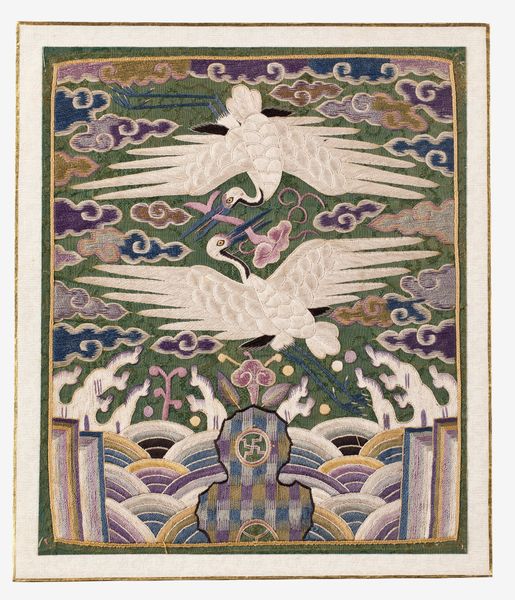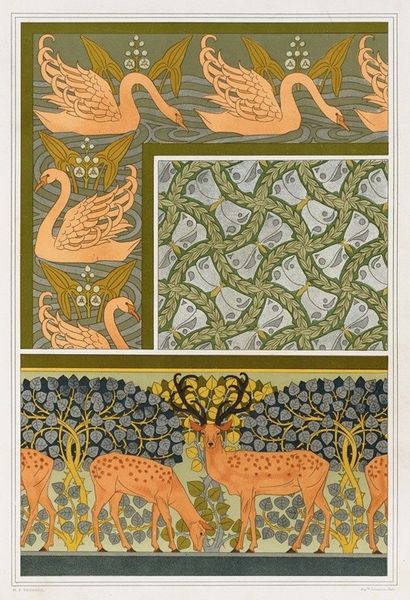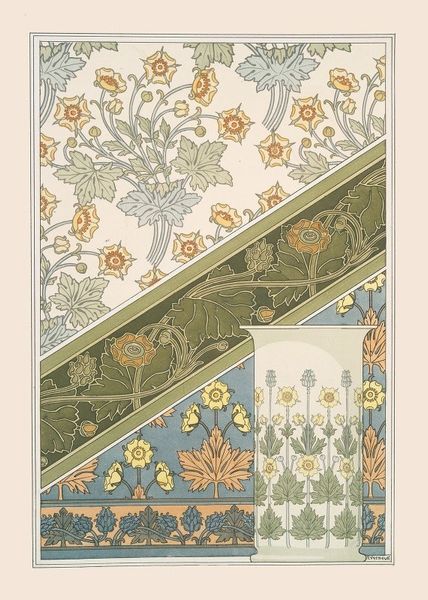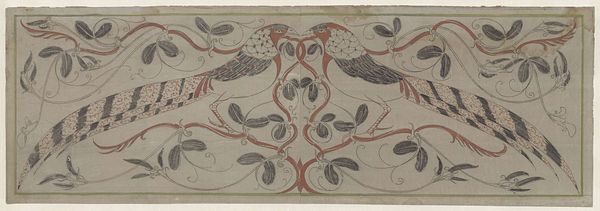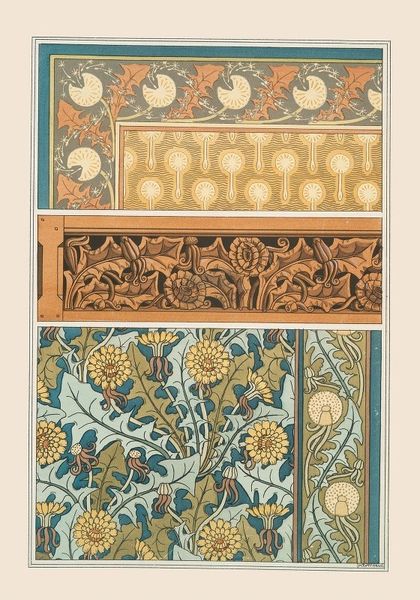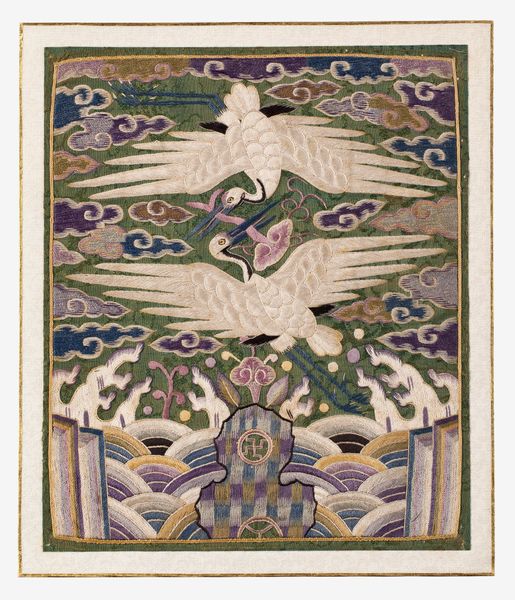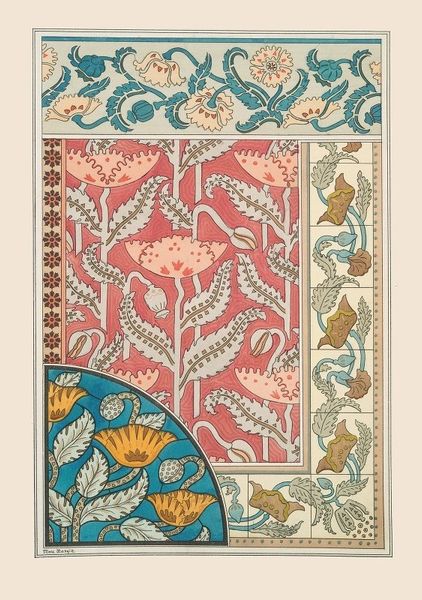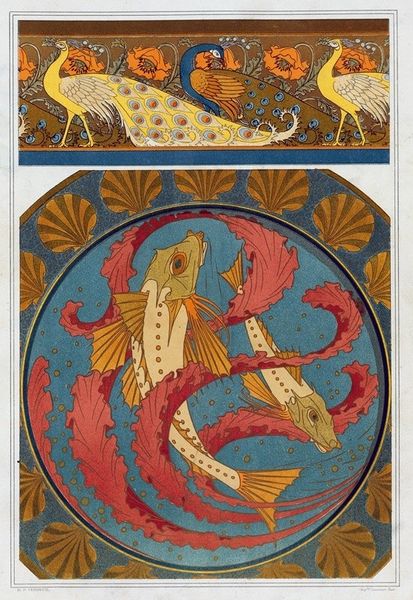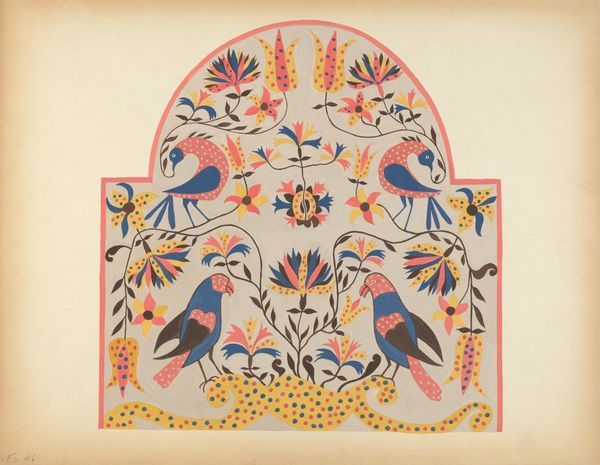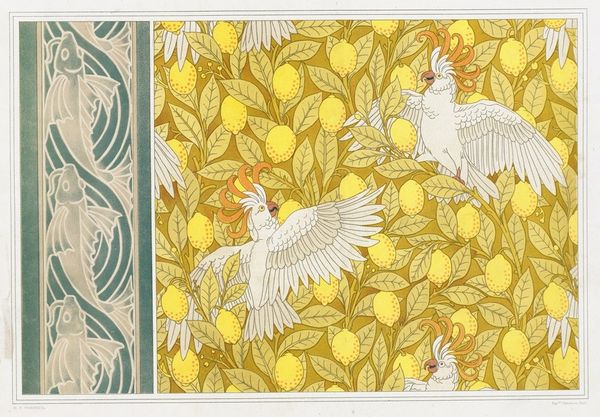
Lucanes et champignons, oxalides et papillons, bordure; cygnes, iris et nénuphars, émail cloisonné 1897
0:00
0:00
graphic-art, mixed-media, print
#
graphic-art
#
natural stone pattern
#
mixed-media
#
naturalistic pattern
#
organic
#
art-nouveau
# print
#
pattern
#
pattern background
#
tile art
#
abstract pattern
#
ethnic pattern
#
organic pattern
#
vertical pattern
#
pattern repetition
#
decorative-art
#
layered pattern
Copyright: Public Domain: Artvee
Curator: Oh, look! It reminds me of sneaking into my grandmother's parlor, all patterned wallpaper and secrets humming in the air. Editor: It's Maurice Pillard Verneuil's 1897 piece: "Lucanes et champignons, oxalides et papillons, bordure; cygnes, iris et nénuphars, émail cloisonné." Mixed media—a fascinating exploration of natural forms rendered in a graphic style. Curator: Cloisonné. Of course! I see it now, those strong outlines, like lead separating fields of enamel. Though instead of devotional images, we're given stag beetles cozying up to mushrooms. Very secular indeed! Editor: Absolutely. Verneuil was deeply engaged in the aesthetics of production. Notice how this "naturalistic pattern" relies on repetition and layering, echoing the industrial printing techniques of the era. These are designs for mass production, effectively bringing nature's complexity to everyday surfaces. Curator: Mass production, yes, but each element is rendered with such loving detail. Look at the irises—their elegant forms practically quiver on the stalk. There’s such joy in those curving lines, a pleasure in simply *being*. It's about more than just "bringing nature" into the home, it is celebrating its strangeness and diversity. Editor: Indeed, Art Nouveau sought to ennoble craft, blurring the lines between fine art and commercial design. Verneuil's images engage with labor, materiality, and even consumption – how the bourgeoisie understood their relation to the environment, turning swans into decor... Curator: Though to be fair, those swans possess a serene dignity, gliding amidst the water lilies. They seem wholly unbothered by being turned into ornament. Editor: Well, consider the broader social context – the burgeoning environmental movements in the late 19th century were fueled by anxieties about industrialization's impact. Curator: Anxieties turned into beauty, wouldn’t you say? Verneuil transforms the tension into an anthem. A symphony of color and form singing praises of everything that makes the Earth feel special, and so much more. Editor: That said, through Verneuil's exploration of mass production, the piece serves as a potent reminder of art's intersection with social and economic realities, challenging established norms to find elegance and beauty through method.
Comments
No comments
Be the first to comment and join the conversation on the ultimate creative platform.

